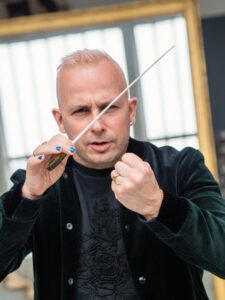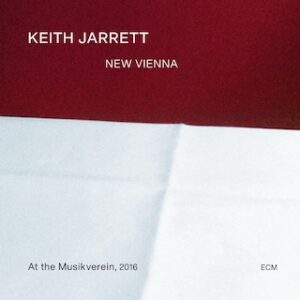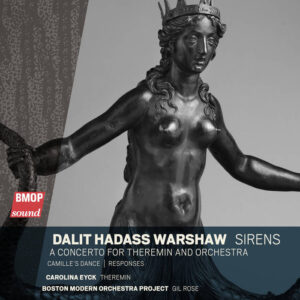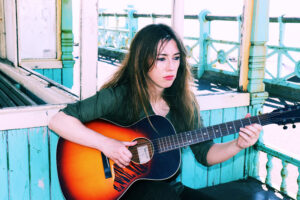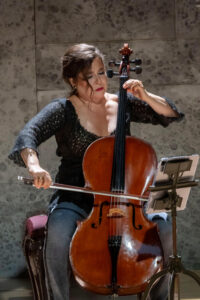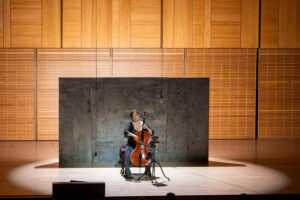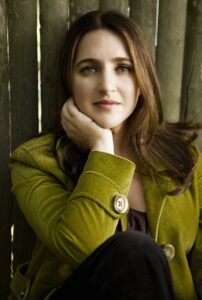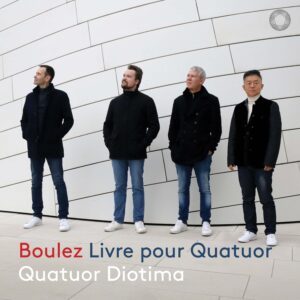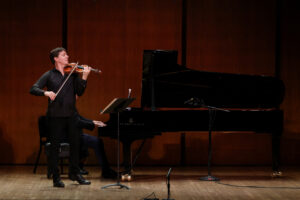
Bell-Isserlis-Denk Trio and Friends
Midsummer Musicfest at Kaufmann Concert Hall, 92nd Street Y
July 9, 2025
NEW YORK – July often finds New York-based musicians playing in summer festivals well outside the city. The 92nd Street Y’s Midsummer MusicFest enticed a small handful of luminaries back to town to play chamber music at the venue’s Kaufmann Concert Hall. Violinist Joshua Bell, cellist Steven Isserlis, and pianist Jeremy Denk have joined forces before, but not for a while in New York. In 2024, to commemorate the one hundredth year of his passing, they toured programs of music by the French composer Gabriel Fauré (1845-1924). They revisited these works at the Y on Wednesday, July 9 and Saturday, July 12.
As Isserlis pointed out in remarks from the stage, Fauré isn’t usually mentioned in the same breath as Debussy and Ravel, but he probably should be. The likely reason is that relatively little of his music was large-scale, and of these only the orchestral arrangement of the Pavane and the Requiem are regularly programmed. On the other hand, his songs and chamber music are a rich repertoire demonstrating abundant compositional gifts; memorable melodies, vivid harmonies, and consummate craftsmanship. Isserlis’s case for Fauré was eloquent, and the playing by the trio, joined by violinist Irène Duval and violist Blythe Teh Engstroem, even more so.
One of the most challenging aspects of playing Fauré’s music is the issue of tempo, namely how much rubato one should use. Reports of the composer’s frequent performances as a pianist suggest that he preferred steady tempos, with flexibility where indicated, seldom admitting extravagances. This became even more true in his late performances, where profound hearing loss meant that coordination with collaborators became all the more important.
In their renditions of the Violin Sonata No. 1 in A Major, Opus 13, Bell and Denk proved that one can be amply expressive without excessive rubato. Their version of the sonata presented its many beautiful tunes and intricate phrasing with both detailed attention and luminous warmth. Its soaring first theme is tempting to exaggerate in the aforementioned manner. Bell instead played expressively, never overdoing it. The audience at the Y couldn’t restrain themselves from bursting into applause after the conclusion of the first movement, enthusiasm trumping any worries about a faux pas. Fauré was ambidextrous, and even when they are not virtuosic, his piano parts can prove challenging. Denk enjoys a good challenge, and he inhabits Fauré’s music with estimable suavity. The sense of ensemble reminded one that these are avid chamber musicians who, by long association, are attuned to one another with razor focus. The second and third movements were no less impressive, and the applause after the entire work’s conclusion was no less resounding.
Isserlis joined Denk for a duo version of the Barcarolle in F-sharp Minor, Opus 66. The cellist has performed Fauré’s Cello Sonata with Denk, but on this evening he contented himself with arrangements of some of the composer’s best-loved piano pieces, their melodies underscored by the addition of cello. In the second half, he also performed the Sicilienne, Opus 78, and Berceuse, Opus 16. The pieces recast in this way underscore memorable melodies, and elsewhere resonant bass notes are doubled and thereby amplified. Denk made sure that the piano, despite inherently different attack and decay profiles from the cello, was in sync with the string instrument, making for a beautiful blended sound.

Duval and Teh Engstroem performed with the trio in the Piano Quintet No. 1 in D minor, Opus 89. The resulting group had a simpatico interaction, its opening allegro movement’s interlacing lines being given particular attention, and throughout a buoyant sense of phrasing. D minor is often used in funereal contexts, the Mozart Requiem and Bach’s D minor Toccata for solo violin to name two. Even in its lyrical slow movement, Fauré’s Piano Quintet never seems to plumb dolorous depths. Instead, the piece feels like a dramatic journey that seldom loses hope for a destination. The concluding third movement was an ample payoff. Instead of ending in minor, it is in D major, with its main theme principally scalar in design. There are little modal inflections around the edges, imparting an impressionist ambience. The performance itself was effusive and unerring, with pinpoint execution of complexly overlapping entrances, thoughtfully nuanced dynamics, and rousing tutti passages. Its close was triumphal in character.
There may not be many hits among Fauré’s orchestral works, but the quintet is chamber music writ large. It is an ambitious piece cast in three sizable movements that clocks in at around a half hour in duration. The composer took great pains to create the version that audiences hear today, starting it around 1887 and taking nearly twenty years to finalize the score. He wrote a second in C minor, completed in 1921, and they both have set a high standard for the genre. The Y’s Midsummer Musicfest fete of Fauré did well by him, and one hopes that it doesn’t take an anniversary year for further championing of this fine composer.
- Christian Carey

